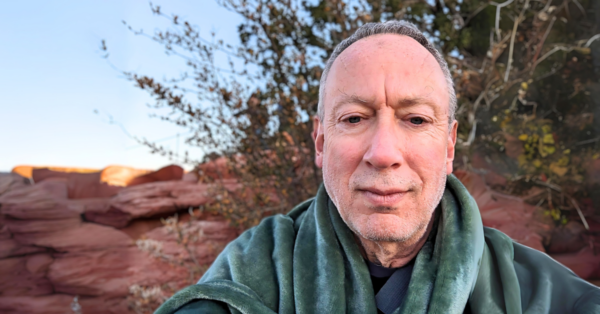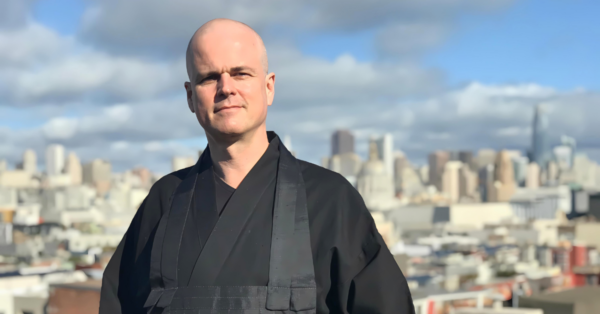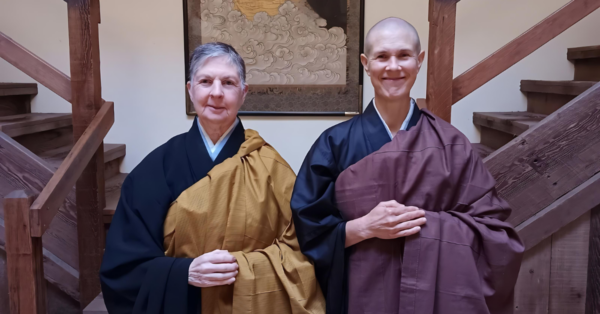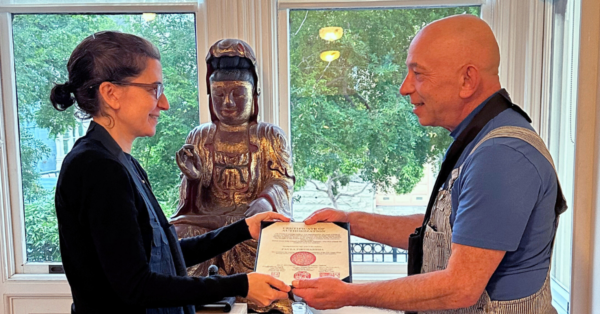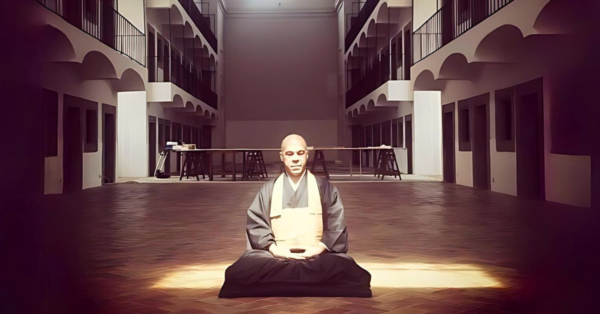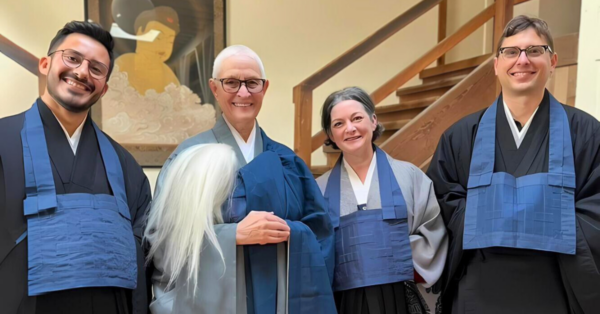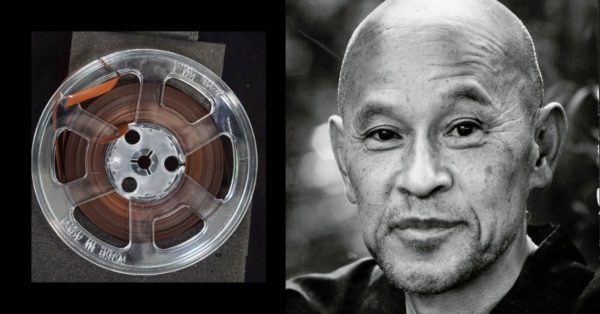
To listen to this talk, “Reflections on the Prajna Paramita,” see the Suzuki Roshi Audio Archive where it is listed on the right side.
This talk was given by Suzuki Roshi at Tassajara on August 24, 1967.
Description:
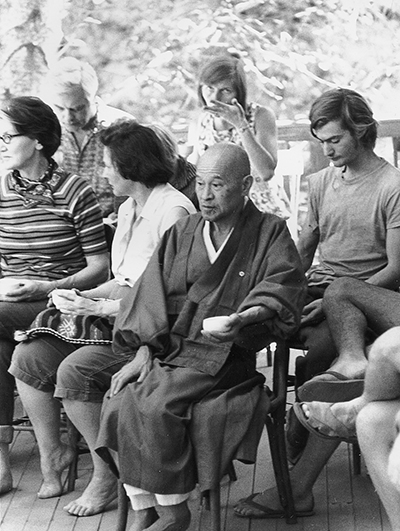
Shunryu Suzuki at Tassajara with students on the dining room deck, c. 1967. Photo by Donn DeAngelo.
This is the talk that was chosen by the Wind Bell (p69) to represent the first sesshin at Tassajara; some of the discussion was also presented in that issue, but listening to the talk reveals that only a very heavily edited selection of the questions and answers that came up that day appeared in the publication.
Suzuki Roshi starts by suggesting that this (the fifth or sixth day of sesshin) would be a good point to reflect back on what he had said up until then, though, of the intertwining themes from the talks, form and emptiness take center stage.
Notably, Suzuki Roshi brings forth an understanding from the Diamond Sutra: “So this teaching of form of—‘form is emptiness and emptiness is form’ is not just verbal teaching which was told by Buddha. It is something more than that. Actually this teaching is the mother of Shakyamuni Buddha … teaching or Shakyamuni Buddha comes out from the teaching or the enlightenment or the emptiness. So emptiness is first and Buddha is second.” (8:33)
This is a challenging shift in the usual way of thinking, and he urges his students to see themselves in the same light: “And your practice is the mother of all beings, and all the worlds and people who live in all the worlds. That is why we say, ‘If one attains enlightenment in its true sense, that is that all sentient beings’ enlightenment.’ Do you understand? [laughs] I’m—I am not involved in some mystical [laughs] thought. I’m telling you actual fact.” (13:48)
Reflecting near the beginning on a student’s story, and at other times in the lecture and discussion, he also encourages his students to take on board the notion that each being is practicing in its own realm, and we should not just think our own experience is the only way: “When I listened to her, I thought: there is her world, as well as animal’s world, and each world there is Buddha. For us there is Shakyamuni Buddha; for animals I don’t know, [laughter] what Buddha there is. But actually animals are practicing so hard in their own way [laughs].” (2:56)
He mentions Sengai’s famous picture and calligraphy of the frog (which he had discussed a year and a half earlier, also in the context of form and emptiness).
Much of what he says is by way of encouraging the students as they reach the end of a long and challenging week of practice: “During sesshin I think you have been making very good effort and you have attained—what you have attained is great. There is no wonder in this point. And you came here, so far away from your home, and you are right now listening to something quite different, a teaching [different from any] you ever have heard.” (23:19)
And he is keenly aware that the state of mind they might find themselves in at such a time might not be one that they can keep hold of: “Well, I think when you are listening to me [laughs] you may feel you understood it [laughs], but you know, when you go home you will be involved in quite usual way of understanding. So be careful [laughs, laughter] not to be involved in a stupid understanding of life. Someone said the kindness in here is quite different from the kindness in the city. That is, I think, very true. Our way of understanding is quite different [laughs]. We do not say anything which we do not firmly believe in it [laughs]. We do not say. We only say what we are believe in, so that is why you feel that you have understood it [laughs, laughter]. Do you see?” (34:52)
More than half of the talk’s running time consists of the students’ questions, about form and emptiness, the ego, various Zen stories, how to express their practice, and other topics. Richard Baker, who was shuso for the practice period, can be heard several times offering answers and helping Suzuki Roshi understand the students’ questions. Other notable sesshin participants, Maezumi Sensei [link is to cuke.com] (as he is referred to at this time) of the Zen Center of Los Angeles [link is to Maezumi’s bio on ZCLA website] and Dr. Albert Stunkard [link is to cuke.com; Wikipedia bio], also contributed to the discussion, meaning this newly found recording is a precious record of a unique event in the birth of Zen in America.
- To view all of the talks that have currently been released and to learn more about this project, see the Suzuki Roshi Audio Archive.
- Please donate to the preservation of San Francisco Zen Center’s audio archives.
- Non-monetary support is also welcome. This collection of talks is a living, evolving archive that depends on input from people like you to unlock the wisdom it contains. Several of the newly discovered talks are in need of transcription, and nearly all can benefit from listeners adding descriptions and keyword tags to improve searchability. To get started, visit the Suzuki Roshi Audio Archive page for many ways to engage.


